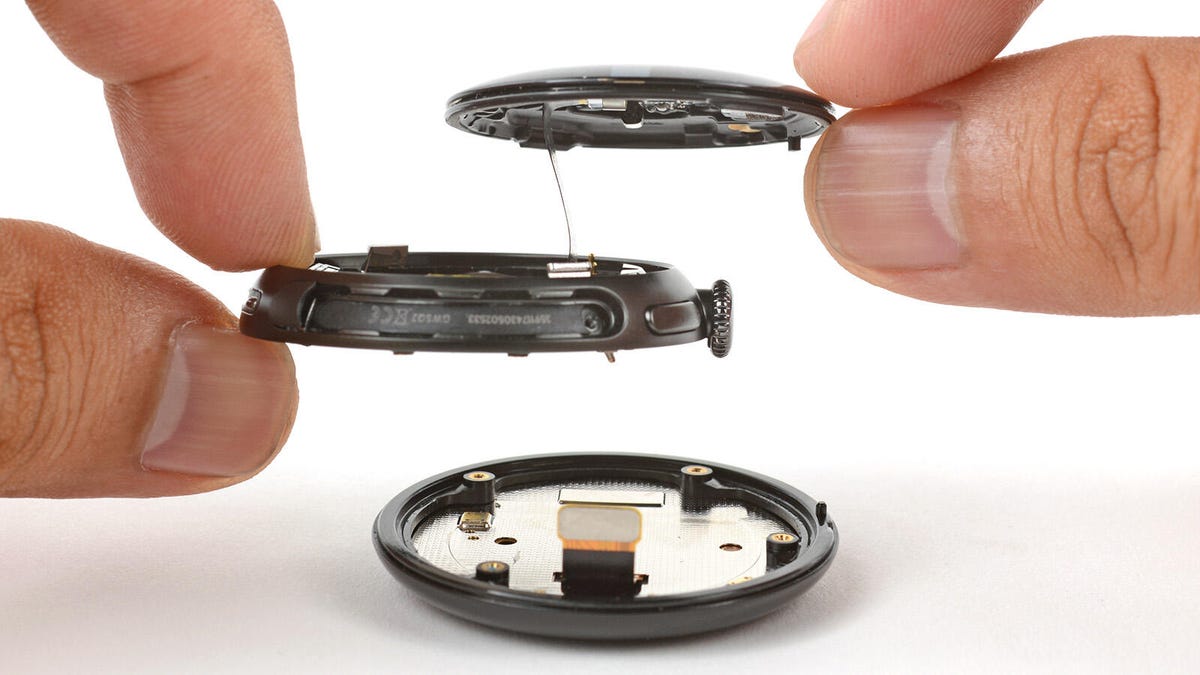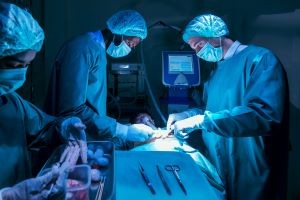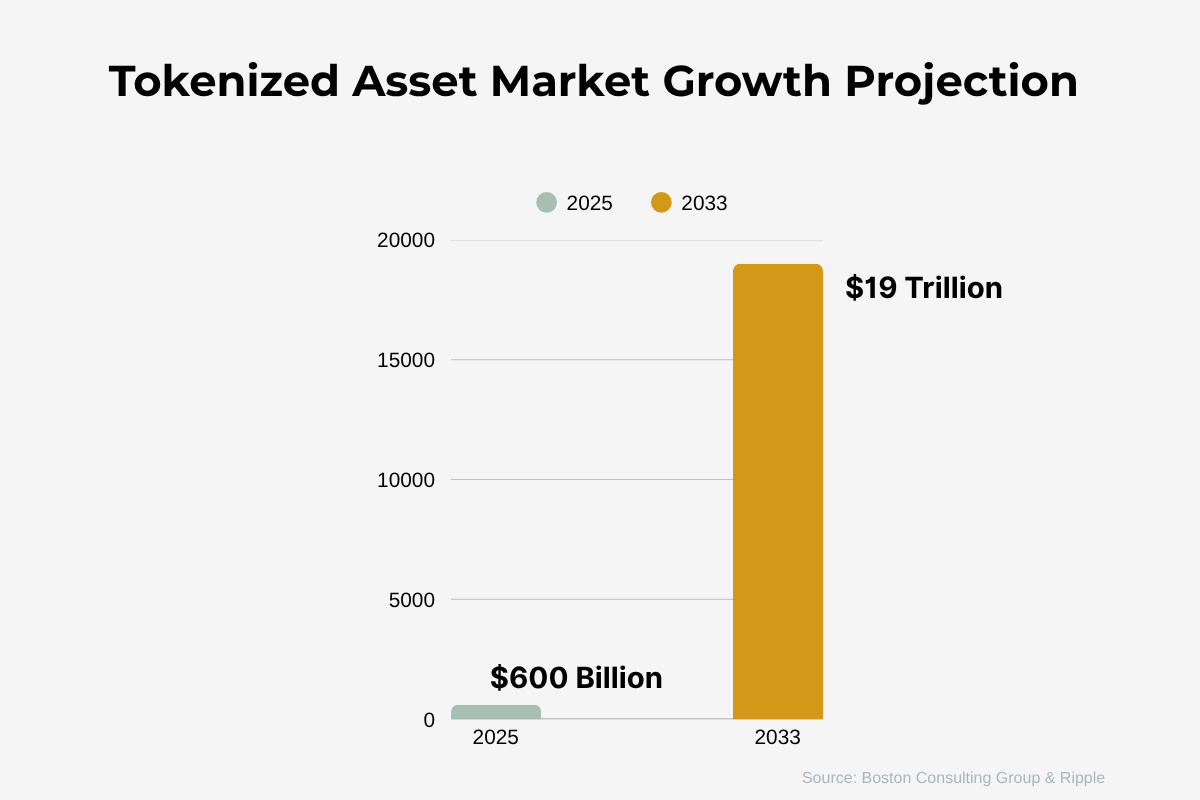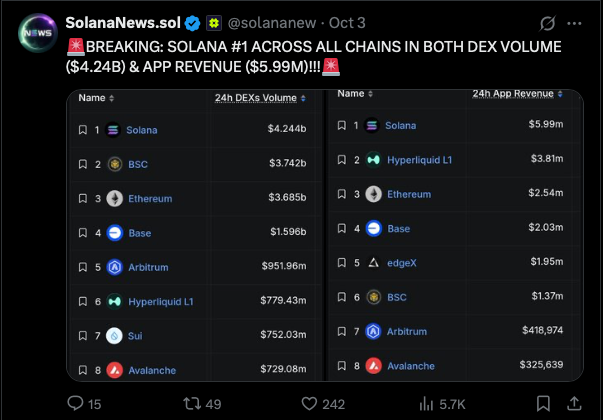- Prince Harry’s lawyers cannot allege Daily Mail publisher targeted Kate, court rules Reuters
- Prince Harry barred from saying Kate and family were victims in privacy claim The Times
- ‘Burglary to order’ allegation thrown out of Prince Harry’s…
Author: admin
-
Prince Harry's lawyers cannot allege Daily Mail publisher targeted Kate, court rules – Reuters
-

Prezent raises $30 million to acquire AI services firms — starting with founder’s other company
Image Credits:Prezent Prezent, a startup that offers an AI-powered presentation builder to enterprises, said today that it has raised $30 million in funding led by Multiplier Capital, Greycroft, and Nomura Strategic Ventures, with…
Continue Reading
-

iFixit tears down ‘the most repairable smartwatch’ – and it’s not from Apple
iFixit/ZDNET Follow ZDNET: Add us as a preferred source on Google.
ZDNET’s key takeaways
- Google’s Pixel Watch 4 is built to be repairable, swapping adhesive for screws.
- The design changes have not compromised the device’s waterproofing.
- iFixit…
Continue Reading
-

Blasts in Pakistan: Suspected suicide bombing and gunfire in Khyber Pakhtunkhwa; 3 terrorists killed, one cop died
Three terrorists were killed and one police personnel died after heavily armed militants attacked a police training centre in Pakistan’s Khyber Pakhtunkhwa province on Friday.The assault took place at the Dera Ismail Khan Police Training…
Continue Reading
-

Arshad Nadeem’s coach hits back at athletics body after World Championships’ setback
Ace javelin thrower Arshad Nadeem (right) and his coach Salman Iqbal Butt (left) visit Aitchison College, Lahore. — Facebook/@arshadnadeem76 KARACHI: Olympic gold medallist Arshad Nadeem’s coach, Salman Iqbal…
Continue Reading
-

Arts Calendar: Happenings for the Week of October 12
Film
• “It Was Just an Accident” (Oct. 15): Jafar Panahi’s Palme d’Or-winning Iranian thriller, filmed without the permission of the Iranian authorities, tells the story of a man who thinks he has found his…
Continue Reading
-

Wall Street Traders Jolted as Tariff War Flares: Markets Wrap
(Bloomberg) — Flaring trade tensions between the US and China sent shockwaves across markets Friday, hammering stocks, oil and crypto while spurring a dash for the perceived safety of Treasuries and gold.
President Donald Trump’s threat of a “massive increase” in China tariffs shook Wall Street at the end of an already-volatile week that saw concern build about a bubble in artificial-intelligence companies. His remarks sent the S&P 500 down about 2% – with the gauge set for its worst day since April. The dollar slid at the end of its best week this year. Crude plunged 4%.
Subscribe to the Stock Movers Podcast on Apple, Spotify and other Podcast Platforms.
Trump said he saw “no reason” to meet Chinese President Xi Jinping, citing recent “hostile” export controls. His social-media post followed a series of moves by both the US and China to potentially curb flows of technology and materials between the countries — all ahead of the presidents’ planned meeting in Asia later this month.
Big downward moves in risky assets have been a rarity of late, which may itself be a factor in Friday’s jarring reaction.
Since the tariff-fueled meltdown in April, the S&P 500 has surged on optimism for AI and hopes for Federal Reserve rate cuts. The gauge is trading at one of its highest valuations in 25 years — leaving a thin cushion for bad news.
“Throughout the summer, greed has far outpaced fear in the US equity market, and the high level of complacency leaves investors vulnerable,” said Michael O’Rourke at Jonestrading. “The selloff has the potential to evolve into a larger correction, especially if the US-China trade truce is over.”
About 400 shares in the S&P 500 fell. The yield on 10-year Treasuries slid nine basis points to 4.05%. The dollar slipped 0.2%.
Chris Zaccarelli at Northlight Asset Management highlighted the importance of the trade relationship between the US and China for market psychology.
“Good trading relations with China help keep markets calm and a trade war with China would be extremely negative for markets,” he said.
To Michael Bailey at FBB Capital Partners, perhaps investors are using the new Trump tariff threats as cover for selling the AI complex, which has been “living on an island” this year, looking at earnings growth.
“In other words, tariffs have done very little to slow the breakneck pace of AI-related companies, so today’s new tariff concerns are a bit surprising,” he said.
Bailey also notes that while earnings season kicks off next week, big tech companies only start reporting later.
“This information black hole for big tech could lead some investors to sell now and avoid some uncertainty over the next few weeks,” he said.
Trade tensions escalated at a time when calls for a breather in the equity rally are growing, with the S&P 500 almost doubling in three years.
“As the market approaches its third anniversary of this bull market off the October 2022 lows, we’re starting to see ‘flashing yellow lights’ advising investors to slow down,” said Craig Johnson at Piper Sandler.
The market ebullience has been so pronounced that investors have recently flocked into everything from stocks to bonds and cryptocurrencies.
Global equity funds attracted $20 billion in the week through Oct. 8, while $25.6 billion flowed into bonds, Bank of America Corp. said, citing EPFR Global data. Crypto funds had inflows of $5.5 billion. Even cash funds saw additions of almost $73 billion, suggesting investors still have plenty of dry powder.
Global stocks are set to advance further after their record-breaking run thanks to better-than-expected earnings in the third quarter, according to HSBC strategists. Alastair Pinder and Dmitriy Leskin.
The strategists don’t see AI in “bubble territory,” given the size of its potential market and the fact that valuations remain below dot-com levels. Lower interest rates and monetary easing by the Fed should encourage investors to put money into equities rather than money-market funds, they said.
While the S&P 500 wobbled a few days this week, the gauge has already seen five record closes, taking the year-to-date total to 33, according to Bespoke Investment Group. If 2025 were to end today, 33 record highs in a year isn’t particularly noteworthy as it ranks tied for the 19th most since 1954.
“What’s been more impressive is that the 33 record closes followed last year’s total of 57,” Bespoke said. “With 90 record closing highs in the last two calendar years, there have only been five other two-year stretches when the S&P 500 had more record closing highs, and not to jinx anything, but there’s a legitimate chance that by the end of the year, the last two years could end up ranking well into the top five.”
“What should catch investors’ attention this week is the market’s progression despite this uncertainty: prices are advancing beyond the limits of asset carry, one of many signs that the market has decided to ignore the ambient uncertainty and now seems to exist within a bubble of positivity,” said Florian Ielpo at Lombard Odier Investment Managers.
Although medium-term risks remain — especially if AI adoption or revenue growth disappoints — the near-term fundamentals should remain resilient, according to Ulrike Hoffmann-Burchardi at UBS Global Wealth Management.
“The current deal flow supports supply chain guidance and could even drive consensus earnings upgrades. Overall, we see the present environment as fundamentally different from prior bubbles, with AI companies largely adopting more prudent investment strategies and healthier corporate finances,” she said.
Meantime, individual investors are buying stocks like never before and leaving the broader market in the dust. But at the same time, a surge in trading volume is raising fears that retail’s favorite positions are getting dangerously crowded.
Citigroup Inc.’s basket of 46 stocks most favored by non-professional investors, which includes companies like SoFi Technologies Inc. and Riot Platforms Inc., is far outpacing the S&P 500. Meanwhile, retail trading volume has increased to an all-time-high, the bank’s equity trading desk wrote in a research note this week.
Corporate Highlights:
Shipments from Tesla Inc.’s Shanghai factory increased in September as China’s car market kicks off its busy sales period and automakers start their final push to meet annual targets. Alphabet Inc.’s Google became the first company to be designated with so called strategic market status in the UK, exposing the US firm’s online search and advertising business to a closer scrutiny by the country’s antitrust watchdog. China slapped new port fees on US ships and started an antitrust investigation into Qualcomm Inc., the latest in a string of tit-for-tat moves as Presidents Xi Jinping and Donald Trump jockey for leverage before a key meeting to discuss trade and other issues. Chevron Corp. plans to drill as many as 10 wells offshore Namibia, one of the busiest exploration hotspots for oil and gas in Africa. Levi Strauss & Co. raised its full-year outlook, but warned that tariffs are starting to bite. Mosaic Co. said that third-quarter phosphate production fell below what management expected, citing mechanical issues at one plant and utility interruptions at another. Preliminary sales volumes for phosphates fell short of what analysts expected. Leaders at AI computing company CoreWeave Inc. sold shares worth more than $1 billion after a lockup on the stock lifted in mid-August, putting them among the top 10 individual insider sellers of the third quarter. Stellantis NV’s third-quarter shipments climbed 13%, led by a rise in North America, pointing to a recovery after the ailing carmaker worked down inventory in the US. Venture Global Inc. potentially faces multibillion-dollar damages over disputed liquefied natural gas shipments, after an unexpected loss in a landmark BP Plc arbitration that could pave the way for additional claims. Applied Digital Corp. said it’s now in advanced discussions with a hyperscaler client for its second data center campus in North Dakota. First-quarter revenue was well ahead of estimates due to one-time income from tenant fit-out services. Carlyle Inc. agreed to take control of BASF SE’s coatings business, creating a standalone company with an enterprise value of €7.7 billion ($8.9 billion). BlackRock Inc.’s actively managed funds are set to accept BBVA SA’s takeover bid for Banco Sabadell SA and tender their shares as the offer period is about to end, according to people familiar with the matter. An investor group led by I Squared Capital is planning a bid for German media group Ströer SE & Co.’s core advertising business, people with knowledge of the matter said. SoftBank Group Corp. is in talks to borrow $5 billion from global banks, refilling its coffers at a time Masayoshi Son is accelerating the Japanese investment firm’s bets on artificial intelligence. What Bloomberg Strategists say…
“President Trump’s escalating rhetoric on China, on the back of rising signs of stress in credit and increased concerns over a tech bubble, are a toxic combination that could derail stocks further just as a new earnings season gets underway.”
—Tatiana Darie, Macro Strategist, Markets Live. For the full analysis, click here.
Some of the main moves in markets:
Stocks
The S&P 500 fell 2% as of 1:08 p.m. New York time The Nasdaq 100 fell 2.6% The Dow Jones Industrial Average fell 1.4% The MSCI World Index fell 1.7% Bloomberg Magnificent 7 Total Return Index fell 3% The Russell 2000 Index fell 2.2% Currencies
The Bloomberg Dollar Spot Index fell 0.2% The euro rose 0.4% to $1.1606 The British pound rose 0.3% to $1.3340 The Japanese yen rose 0.8% to 151.79 per dollar Cryptocurrencies
Bitcoin fell 2.7% to $117,889.92 Ether fell 5.4% to $4,103.16 Bonds
The yield on 10-year Treasuries declined nine basis points to 4.05% Germany’s 10-year yield declined six basis points to 2.64% Britain’s 10-year yield declined seven basis points to 4.67% The yield on 2-year Treasuries declined eight basis points to 3.52% The yield on 30-year Treasuries declined eight basis points to 4.65% Commodities
West Texas Intermediate crude fell 4.2% to $58.94 a barrel Spot gold was little changed –With assistance from Denitsa Tsekova and Vildana Hajric.
©2025 Bloomberg L.P.
Continue Reading
-

Call for papers – Challenges in heart transplantation
BMC Cardiovascular Disorders is calling for papers on Challenges in heart transplantation. Heart transplantation remains one of the most effective treatments for end-stage heart disease, yet it poses a myriad of challenges…
Continue Reading
-
Just a moment…
Just a moment… This request seems a bit unusual, so we need to confirm that you’re human. Please press and hold the button until it turns completely green. Thank you for your cooperation!
Continue Reading
-

Wall Street’s $19T Tokenization Boom Sends SOL & DeepSnitch AI Soaring
Disclaimer: This is a Press Release provided by a third party who is responsible for the content. Please conduct your own research before taking any action based on the content.
Wall Street has joined the blockchain revolution. Robinhood’s CEO, Vlad Tenev, stated that tokenization is “a freight train that can’t be stopped”, further suggesting that it “will eat the entire financial system” over time. With the tokenized asset market expected to grow from $600 billion in 2025 to just shy of $19 trillion by 2033, traditional finance is scrambling to tokenize stocks, bonds, and real estate.
Thus, for crypto investors on the lookout for the best crypto to buy now, this marks an excellent time. While Solana and XRP are established players sure to benefit from institutional adoption down the road, lesser-known projects like DeepSnitch AI might be at the perfect stage for explosive gains.
Priced at $0.01805 in Stage 1, with over $330K raised, DeepSnitch AI could be the best crypto to buy now to 100x this bull run. Here’s why!
Wall Street’s tokenization revolution: Why it matters for crypto
Recently, Nasdaq asked regulators for approval to allow listed stocks to trade in a tokenized format on its platform. Should the SEC approve this initiative, we could see the first-ever digitization of stocks as a merger of traditional finance and blockchain technology. The decision was announced in September, with the chance of a verdict arriving within 45 to 90 days.
Moreover, BlackRock’s CEO Larry Fink has tripled down on this vision, noting that “every stock, every bond, every fund will be on one general ledger.” Already, BlackRock is trying to tokenize ETF offerings that tie into real-world assets like stocks and bonds, pending regulatory approval.
Boston Consulting Group and Ripple believe that the total real-world asset tokenized market could grow from approximately $600 billion today to $19 trillion by 2033. This includes stablecoins, tokenized bonds, tokenized real estate, and other commodities, all moving onto blockchain rails for faster settlement and 24/7 trading.

For retail investors, this legitimizes what crypto bulls have believed for years: that blockchain infrastructure is not just for Bitcoin maxis. It’s becoming the digital underpinning of global finance.
Previously, the focus was on whether this infrastructure would ever be built and, if so, how much value any specific token could capture. Now, the emphasis has shifted to identifying which tokens will capture the most value. Therefore, choosing the best crypto to buy now is essential to stay ahead of the coming institutional influx.

Best crypto to buy now
DeepSnitch AI (DSNT)
Of course, Solana and XRP could go exponential this cycle, but with billions in market cap already, their parabolic days are likely behind them. For those traders chasing 100x potential, it’s all about buying early.
DeepSnitch looks like the best opportunity out there. The project features five AI agents developed by on-chain analysts to track whale wallets, monitor rug pulls, assess contract risks, and send AI-powered alpha directly to your Telegram.
While many meme coins are driven by hype, DeepSnitch AI provides holders with tools, whale alerts, rug alerts, and real-time trading information that keep investors in the game rather than panic selling at the first sign of a token collapse.
Here’s the other angle of asymmetric potential upside: tokens like Solana aren’t going to provide 100x gains anymore, they’re too large. DeepSnitch is literally at the right stage to provide even sub-100 million inflows to scale into unprecedented multiples when it hits exchanges.
If a meme coin like Pepe can go up 100x in 2023 when it has nothing but hype behind it, there’s no reason DeepSnitch can’t replicate this performance with real AI-facilitated utility behind it.
By plugging into Telegram with over 1 billion active users, DeepSnitch has access and distribution that few crypto projects ever get. Utility and immediate reach are the keys to making a presale a worldwide phenomenon.
Right now, DeepSnitch AI is in Stage 1 of presale for just $0.01805, having raised over $335k in just days, with the lowest price to enter and all AI features accessible post-launch as they become available.
Solana (SOL): Performance & price prediction
As one of the strongest performing tokens going into the October trades, Solana is trading around $234, up over 11% in the past week alone. Solana broke past its 50-day and 200-day moving averages recently as institutional interest surges.
Spot Solana ETF approval is over 90% likely as the SEC faces a number of deadlines in October. Grayscale’s conversion deadline is set for October 11, followed by others before the month’s end. JPMorgan analysts predict these Solana ETFs will attract as much as $6 billion in new capital during the first year, at least comparable to the institutional inflows supporting Bitcoin’s ascent above $125k.

Price predictions for Solana in October rest between $240 to $260 (but some analysts predict $400 by year’s end if ETF approvals send the rally on a sustained spin). Furthermore, Bit Mining and Upexi own over 3.5 million SOL combined, now worth $591 million+, meaning the SOL supply available (which drives price down) decreases while demand for SOL (which drives price up) increases.
XRP: Performance & price prediction
XRP trades at about $2.85 as of now, following an incredible bounce throughout September. Currently, XRP consolidates towards support. Between October 18 and October 25, the SEC has eight deadlines regarding XRP ETF applications from leading issuers like Grayscale, WisdomTree and Franklin Templeton.
Bloomberg analysts essentially deem approval a 100% probability. Should this happen, an estimate of $3 to $8 billion in institutional inflows will be unleashed within a single year. On top of that, Steven McClurg from Canary Capital expects as much as $5 billion within the first few weeks of approval for XRP, potentially driving prices into the $20 to $30 range.
Standard Chartered keeps a $5.50 price target on XRP by year-end, while other analysts forecast $9 XRP assuming supply shock measures approach maximum capacity. For those interested in trading with established projects with near-term catalysts, XRP boasts great upside.
The bottom line
Wall Street’s push for tokenization isn’t coming, it’s here. With $19 trillion in traditional assets expected to go on-chain by 2033, the infrastructure layer is being developed as we speak. While Solana and XRP will benefit from institutional inflow over time, both being established means more moderate upside.
DeepSnitch AI is in a different league altogether. At presale pricing of just $0.01805, even getting a fraction of that demand, the price could rise exponentially, something that major players at major valuations simply can’t offer. The presale is also paired with five AI surveillance tools specially designed for the tokenization surge, which gives buyers presale access to an important operational edge, not just a speculative one.
Check out the DeepSnitch AI presale before the next price jump.

FAQs
Which crypto will benefit the most if tokenization becomes reality?
Solana and XRP are projected to rise with Wall Street implementation. However, DeepSnitch AI’s presale price of $0.01805 has a lot more room to run. DeepSnitch is a small-cap, which means 100x returns are possible.
Is Solana a good investment at $234?
SOL has an excellent chart and impending ETF approvals. However, at a $126 billion market cap, Solana is no longer in the explosive growth stage. Traders looking for the best crypto to buy now with more upside might want to jump into projects like DeepSnitch AI that are still in the earlier stages.
Why is DeepSnitch AI considered the best crypto presale?
DeepSnitch AI is still in development stages, low-priced, and its construction with five AI surveillance tools means that traders have an edge against whales. This mix of meme coin virality with real utility is seldom found, which is why many consider it the best crypto to buy now for life-changing returns.
Disclaimer: This media platform provides the content of this article on an “as-is” basis, without any warranties or representations of any kind, express or implied. We assume no responsibility for any inaccuracies, errors, or omissions. We do not assume any responsibility or liability for the accuracy, content, images, videos, licenses, completeness, legality, or reliability of the information presented herein. Any concerns, complaints, or copyright issues related to this article should be directed to the content provider mentioned above.
/div>
Continue Reading